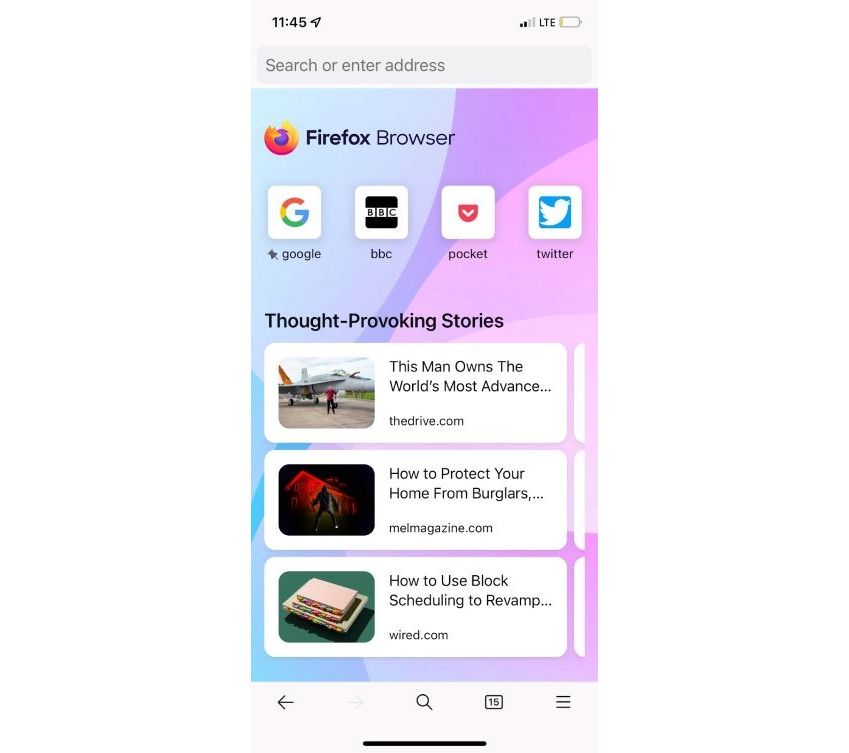HTTPS Mode: New Version Of Firefox Android Automatically Opens Websites In HTTPS Mode
Mozilla says the new version of Firefox Android automatically switches to the secure HTTPS protocol when browsing websites.
Over time, Mozilla has made more significant efforts to protect its users’ security and privacy. According to Android Central, the Android version of the Mozilla Firefox browser now hosts a new mode that automatically creates an encrypted connection when a user browses HTTPS-supported websites.
Firefox’s new security feature is just one of the changes this browser’s version 100 is experiencing. Version 100 of Mozilla Firefox is now available for download.
Mozilla says the new Firefox feature “enhances your Android browsing session to a secure connection via HTTPS whenever possible.
“However, this feature does not apply to websites that still rely on HTTP.
Mozilla’s efforts to increase user security began with Firefox’s HTTPS protocol version 91, released last year. Mozilla said that when a user was in private browsing mode, Firefox would automatically switch to secure web communications.
The new version of the Firefox browser also includes a new feature for organizing browsing history on Android and iOS. One Mozilla solution is categorizing your search history by the main item; for example, if you look for shoes and see several shoe models, you can classify them as the primary search subset.
Mozilla also removes duplicate site names to make the browsing history page more organized.

The Android version of Firefox has also undergone some changes. In the new version, you can customize the look of Firefox by using wallpapers. Firefox wallpapers will be released for iOS in a few days.
Firefox has hosted several other changes, which can be found on Mozilla’s official website. Mozilla says the picture-in-picture mode in the desktop version of Firefox will now host subtitles. This feature will work with YouTube, Amazon Video Prime, Netflix, and other websites that support the WebVTT format.
In Firefox for Android, HTTPS-Only Mode ensures secure, encrypted website connections whenever possible. This is particularly helpful when using public Wi-Fi, where the internet connection might not be secure. You can turn this feature on or off through the settings menu.
Difference Between HTTP and HTTPS
HTTP (Hypertext Transfer Protocol) is the basic web protocol that facilitates communication between browsers and servers. However, HTTP lacks encryption, making data vulnerable to interception, theft, or alteration.
HTTPS addresses these shortcomings by utilizing TLS (Transport Layer Security) or SSL (Secure Sockets Layer) to establish a secure, encrypted connection between the browser and the server, safeguarding sensitive information.
For instance, if HTTPS-Only Mode is enabled and you visit http://example.comFirefox will automatically upgrade the connection to https://example.com.
How to Enable or Disable HTTPS-Only Mode
- Tap the menu button (Android menu icon).
- Go to Settings.
- Select HTTPS-Only Mode.
- Use the toggle switch:
- Slide left to disable HTTPS-Only Mode.
- Slide right to enable it.
- If enabled, choose between Enable in all tabs or Enable only in private.
When a Secure Site Isn’t Available
Some websites only support HTTP and their connections cannot be upgraded. In such cases, you’ll encounter a “Secure site not available” page:
- To proceed with an unencrypted connection, Tap Continue to HTTP Site (this temporarily disables HTTPS-Only Mode for that site).
- To avoid the connection, Tap Go Back (Recommended) or use your device’s back button.
This feature helps ensure safer browsing while allowing flexibility for unsupported sites.
Mozilla recently celebrated the release of Firefox’s 100th version, packed with new visual improvements and features for desktop and mobile users. One notable addition is the introduction of HTTPS-Only Mode for Firefox on Android. This feature ensures that secure, encrypted connections are established whenever possible.
As part of Mozilla’s privacy-first approach, this functionality will automatically upgrade your browsing session to HTTPS if the website supports it.
Firefox will default to the less secure connection for sites still using HTTP. This update builds on Mozilla’s ongoing efforts to prioritize secure web connections, a journey that began with Firefox 91, which introduced HTTPS by default in private browsing mode.
The 100th release of Firefox represents another step forward in enhancing security and protecting user privacy, especially on mobile devices.
